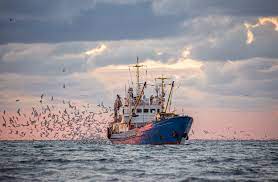Illegal, unreported, and unregulated fishing costs African countries up to $11.49 billion annually, according to a new study conducted by researchers from the University of Wisconsin-Madison and Duke University, that also found that over 75% of the world’s industrial fishing vessels, mostly in Africa and South Asia, are operating “incognito.”
In the new study published in the Nature Journal, researchers from NGO the Global Fishing Watch have used machine learning and satellite imagery recorded in the past three years to create a global map of large vessel traffic and offshore infrastructure.
They found that since most vessels don’t broadcast their location and are not detected by monitoring systems, the world has actually no clear picture of who fishes what. They found that 75% of the world’s industrial fishing vessels are not publicly tracked, mostly in Africa and South Asia. The survey highlights the challenges facing Africa in managing the continent’s natural resources such as protected marine areas, with many of the ‘incognito’ vessels said to engage in illegal fishing.
“Although not all boats are obligated by law to transmit their position, the presence of vessels not participating in public monitoring systems, commonly referred to as “dark fleets,” presents obstacles to the conservation and management of natural resources,” says David Kroodsma, director of research and innovation at the NGO Global Fishing Watch and co-lead author of the study. The researchers detected 63,300 vessel occurrences between 2017 and 2021, with about 75% of them not appearing in public monitoring systems. For example, Kenya has declared war on illegal fishing by suspending licensing of foreign fishing vessels for not remitting required levies and declaring fish catches. Among foreign-owned vessels, it is especially those with Chinese, Seychelles, Italian, Taiwanese, and Hong Kong flags that are appearing multiple times on the tracking site, according to the data from the Kenya Maritime Authority.



